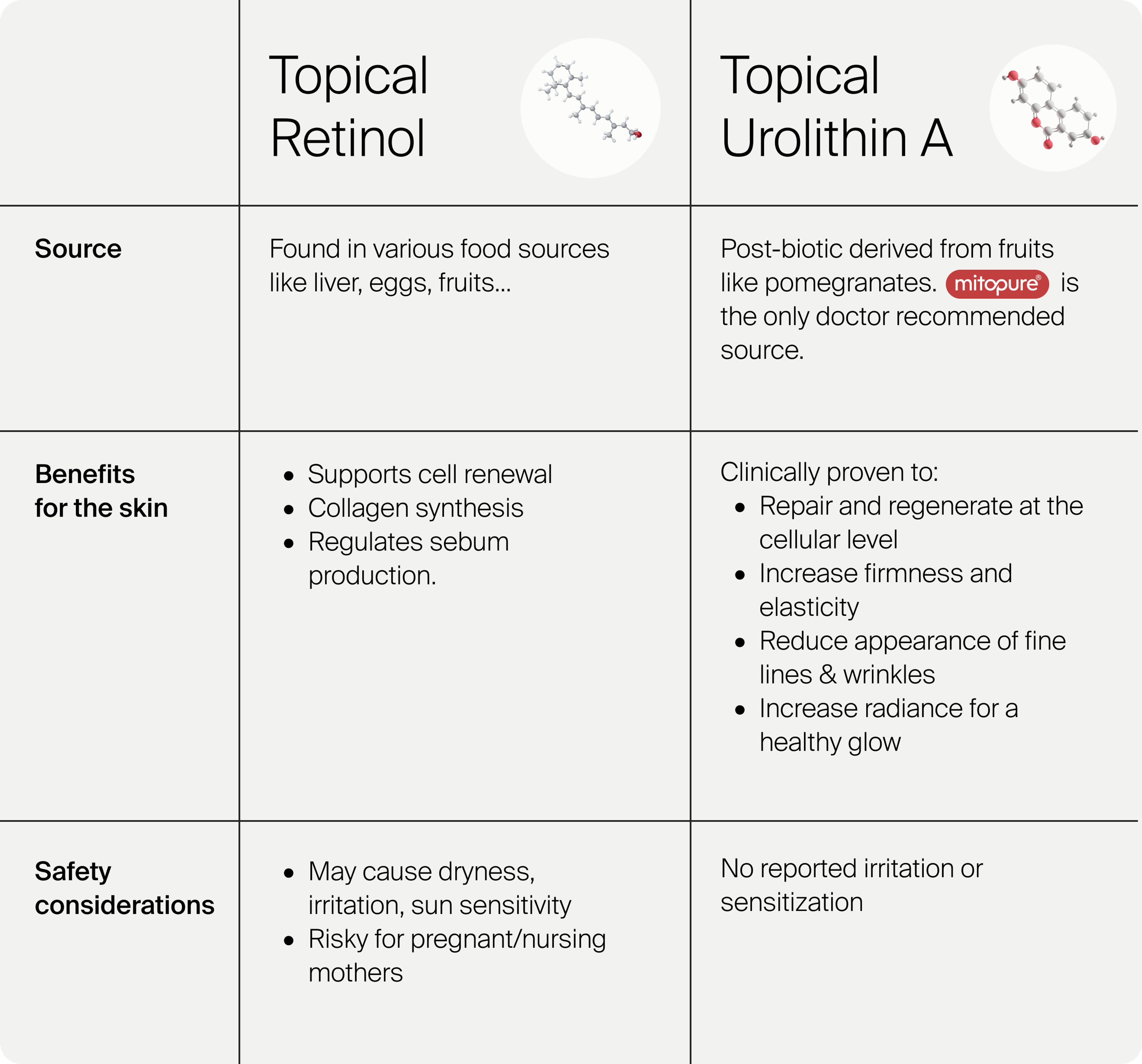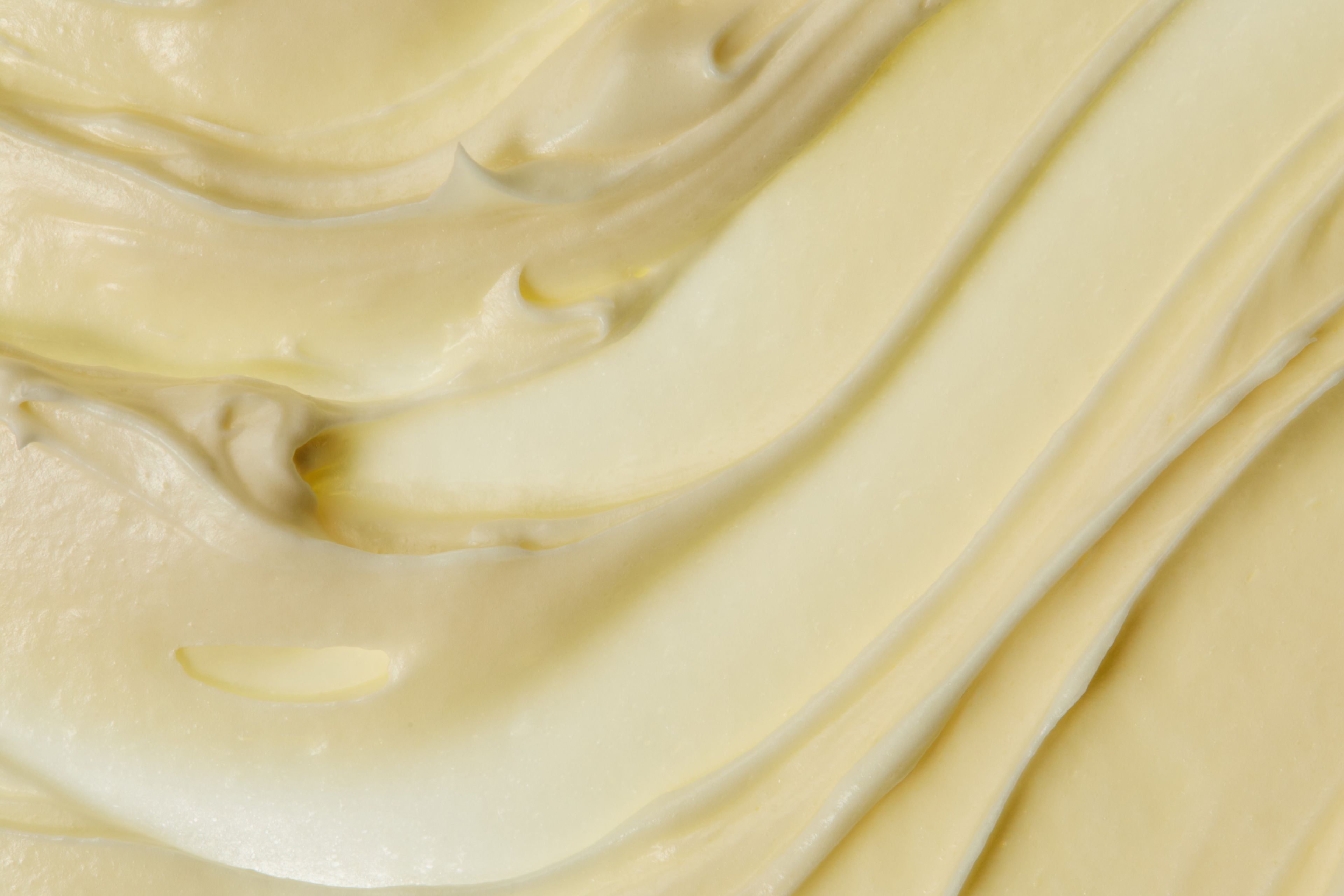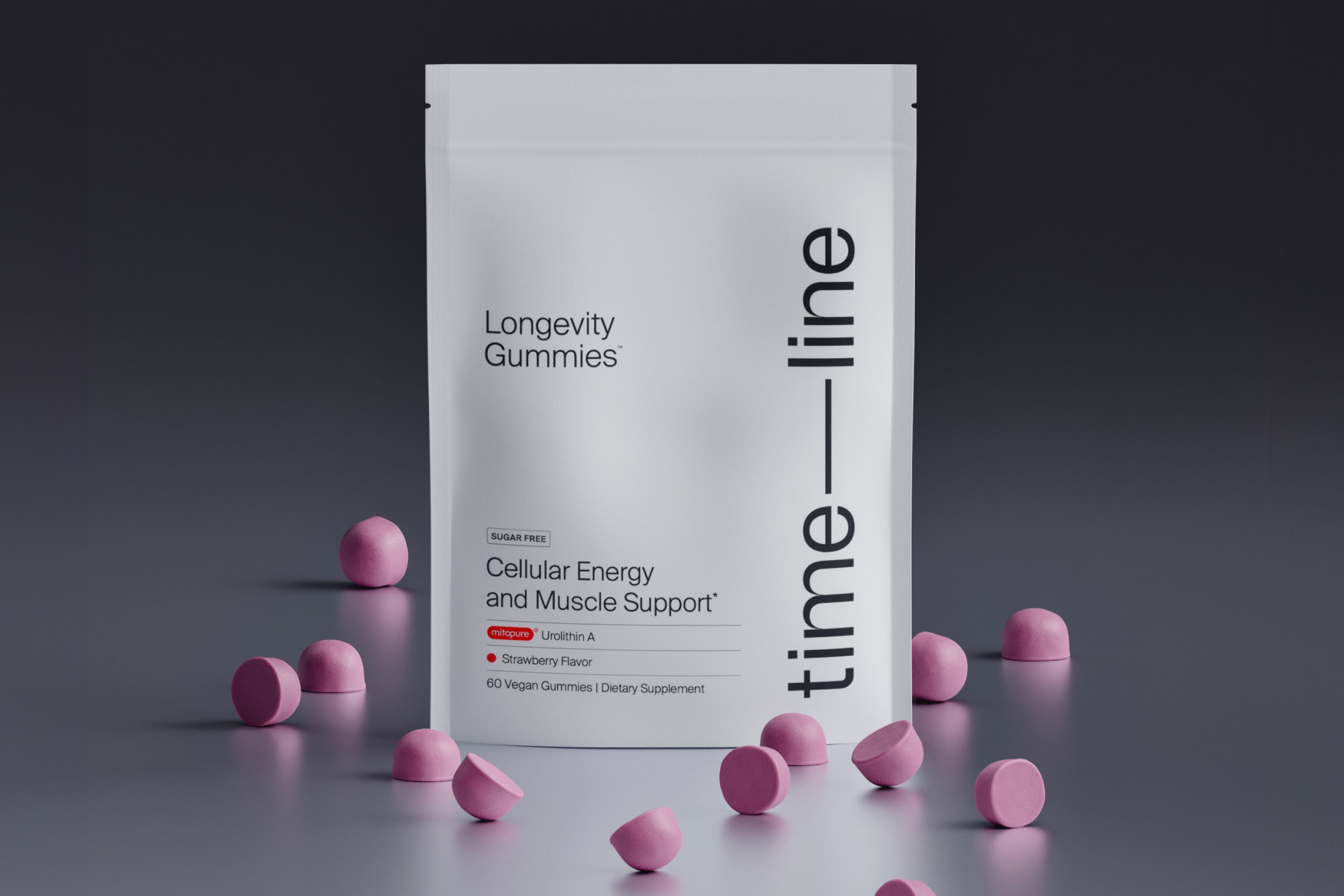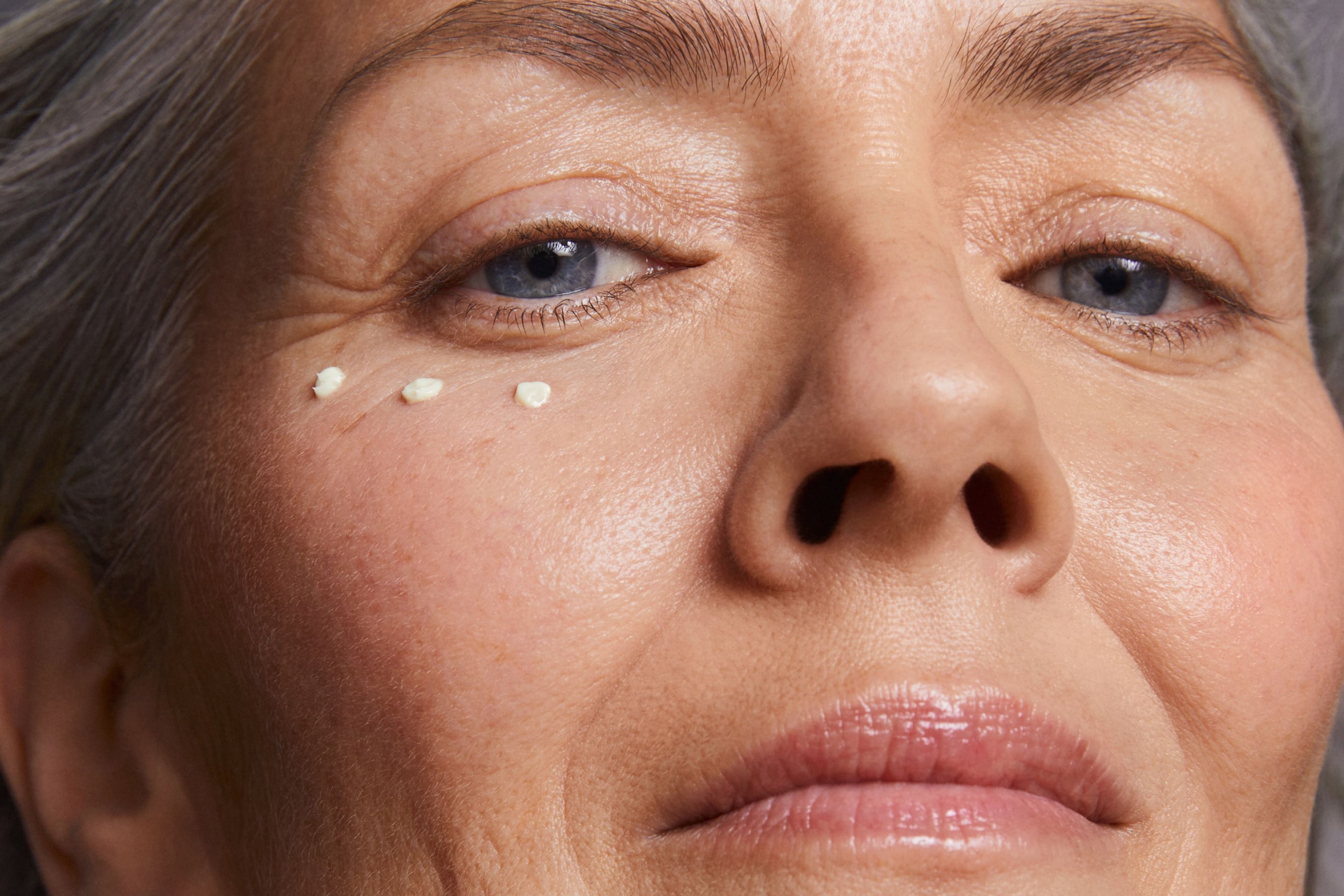What does Vitamin A do for your skin?
Explore the pros and cons of vitamin A for skin health and longevity and discover effective and safer alternatives for youthful, glowing skin.

What to know
Vitamin A, through its derivatives, retinol and retinoids, plays a crucial role in skin health, promoting cell renewal, collagen synthesis, and sebum regulation, which collectively contribute to a more youthful and healthy skin appearance.
While the benefits of vitamin A for skin are significant, potential side effects such as dryness, irritation, and increased sun sensitivity highlight the importance of cautious use, especially for those with sensitive skin or pregnant and nursing mothers.
Mitopure®, a highly pure form of Urolithin A, emerges as a groundbreaking alternative to traditional vitamin A derivatives, offering similar benefits for the skin without the associated risks and side effects.
Mitopure uniquely supports skin health by re-energizing skin cells at the mitochondrial level and promoting resilience against both intrinsic and extrinsic aging factors, including sun damage.
Retinols and retinoids have become a household name in skin care, with both dermatologists and beauty experts recommending them to promote skin health and longevity. Did you know that these compounds are derivatives of vitamin A? Topical forms of vitamin A come in several forms and can be used in different ways. Let’s take a look at the various forms of vitamin A, vitamin A benefits for skin, sources of vitamin A, if you should take vitamin A supplements and the associated risks.
While there is some great research on the benefits of retinol and retinoids for skin health, there are also some well-known side effects and concerns with using them. This blog will cover everything you need to know about vitamin A for the skin and how Mitopure® is a gentler but highly effective alternative.
Urolithin A as a retinol alternative
Mitopure®, a highly pure form of the Urolithin A compound, has recently surfaced as a longevity-promoting molecule that can target skin health and aging at the cellular level.[1]
Mitopure works by re-energizing the cellular “powerplants” and helps to combat both the internal and external factors that cause the skin to age. It is clinically proven to promote collagen organization and assembly, resulting in visible improvements in wrinkle depth and volume after just two weeks. [2]And unlike retinol and retinoids, Mitopure makes the skin more resilient to the damaging effects of the sun.
Mitopure will not irritate the skin as vitamin A derivatives do. Clinical studies found no issues with irritation or sensitization to Urolithin A.[3] This makes it a safer and gentler alternative to retinol and retinoids while still achieving the remarkable skin-boosting benefits one associates with vitamin A.
Read on to learn more about the benefits and frustrating side effects of vitamin A for the skin.


The Serum
Bestseller4.6 · 129 reviews
Lifts the skin. Powered by Mitopure®
What is vitamin A?
Vitamin A refers to a family of fat-soluble molecules called retinoids. These molecules are essential to various metabolic processes in the human body. Retinoids are known to strengthen vision, support the immune system, improve reproductive function, enable deep sleep, and promote overall longevity![4]
Retinol vs retinoid
Vitamin A is defined as a group of retinoids. Some of these retinoids are in their active form, and some are in their inactive form. Retinoic acid is an active retinoid, and retinol is an inactive retinoid. Retinoic acid is far more potent because it is already in its active, processed form. Retinol is more well-known but is a milder derivative of vitamin A.[5]
Vitamin A benefits for skin
Getting enough vitamin A in the diet is essential for good skin. However, topical vitamin A is also used as an active ingredient in skin care to address several concerns, such as acne,[6] wrinkles, and hyperpigmentation. It can also be used to promote skin health and longevity.[7] Let’s take a look at retinoid and retinol benefits.
#1: Cell renewal
Out with the old and in with the new! Cell renewal promotes a healthy skin appearance and even diminishes fine lines, scars, and hyperpigmentation.
Retinoic acid, the active form of vitamin A, is key to promoting cell turnover. There are specific receptors on skin cells in the epidermal layer, the outermost layer of the skin. Retinoic acid binds to these receptors to regulate cell proliferation and death. Cell proliferation allows for fresh, new cells in the epidermis. This thickens the epidermis improving skin resilience and appearance.[8]
#2: Collagen synthesis
Vitamin A works deep in the skin, past the epidermis, in the dermal layer. It stimulates fibroblasts, cells responsible for producing collagen. Collagen is a key structural protein to overall skin health and function.
It strengthens the skin’s epidermal layer; this makes the epidermis more effective at locking moisture into the skin and keeping pathogens out. Collagen not only leads to a more resilient skin barrier but can also improve skin appearance by tightening pores, maintaining skin hydration, and combatting sagging and wrinkling. It also repairs sun-damaged skin.
#3: Sebum regulation
Sebum is an oily substance produced by the sebaceous glands in the skin. High sebum production can lead to skin conditions such as acne, while low sebum production can result in dry, easily irritated skin. Topical and oral retinoids are known to reduce sebaceous gland activity.[9]
Sebaceous glands contain specialized cells called sebocytes, responsible for the production of sebum. Retinoic acid inhibits sebocyte production, preventing sebum overproduction. Vitamin A is also an antioxidant, and studies have shown that people with higher levels of vitamin A in their plasma have a lower incidence of acne[10]. In fact, vitamin A derivatives such as tretinoin and isotretinoin (i.e., Accutane) are specifically tailored to address oily, acne-prone skin.
Best practices for using vitamin A for longevity
Like other vitamins, vitamin A is an essential nutrient for health, longevity, and skin function. (Read more about vitamins for longevity here!) While it’s critical to get enough vitamin A in the diet for skin health, using topical vitamin A in addition to a well-balanced diet can provide more benefits to the skin.

Foods that are rich in vitamin A
Eating foods high in vitamin A or precursors to the vitamin can promote cellular health and well-being. It has multiple functions including the maintenance of healthy skin.[11] A few good sources of vitamin A include:
- Liver & salmon. Animal liver and fatty fish such as salmon are rich in retinol.
- Eggs. Egg yolk contains retinol.
- Sweet potatoes & mangoes. These foods are rich in beta-carotene, a pigment that converts to retinol.
- Carrots & spinach. Carrots and spinach are also rich in the beta-carotene pigment, producing retinol.
Vitamin A supplements
If you eat a well-balanced diet, you are likely getting enough vitamin A through food. Vitamin A is fat-soluble, meaning your body stores it, so it can build up to dangerous levels if taken in excess. [12]If you are concerned about your intake of vitamin A in your diet, it’s best to talk with your healthcare provider about what form and how much would be best for you.
Topical vitamin A
Many people use topical forms of vitamin A for the benefits to their skin. When applied directly to the skin, it can improve skin texture, help clear up acne, reduce hyperpigmentation, and enhance overall skin appearance. There are many over-the-counter and prescription options that are available.
Best practices for using vitamin A products for skin
Vitamin A skin benefits are scientifically backed. However, results may take weeks to months to appear, so it’s important to be patient and consistent. There are also notable side effects when using retinol and retinoids topically.
Here are some things to keep in mind when starting your vitamin A journey.
When should I use vitamin A?
Retinoids should be a part of your nighttime skin routine. While you sleep, the skin undergoes a natural regeneration process and is more receptive to the benefits of retinoids. Retinoids also increase sun sensitivity; nighttime application helps avoid strong sun exposure after use.[13]

What are some risks?
Here are a few risks associated with the topical application of retinoids.
- Dryness and irritation. Topical application can cause dryness, scaling, and even burning in some individuals. The level of irritation appears to depend on the form of vitamin A.[14]
- Avoid certain ingredients. Some ingredients can deactivate certain forms of vitamin A, such as benzoyl peroxide, which is typically used to treat acne. [15]Talk to your dermatologist about which forms of topical A fit best into your skin routine.
- Sun sensitivity. Retinoids can increase skin sun sensitivity. Make sure to apply sunscreen daily while using retinoid products.
- Risks to pregnant and nursing mothers. High doses of vitamin A (both in the diet and topically) can be dangerous for a fetus. Consult your healthcare practitioner before using either a dietary or topical form of vitamin A while pregnant.[16]
Alternative skincare products
Although retinoids are considered highly effective, they still carry risks, especially for sensitive skin. Alternate skincare ingredients can also soften wrinkles, improve skin texture, and promote skin longevity with as much efficacy as vitamin A. These ingredients are much gentler than retinoids and safe for sensitive skin. (Read more about avoiding harsh skincare ingredients here!)

Final words
In the realm of skincare, understanding the balance between efficacy and gentleness is key. Vitamin A, in its various forms, has long been celebrated for its transformative effects on skin health, offering a pathway to rejuvenation and longevity. While the effect of vitamin A can’t be denied, too many people find that they cannot tolerate the side effects.
The emergence of Timeline’s Skin Health line introduces a novel approach, harnessing the power of Urolithin A to energize skin cells without the harsh side effects associated with traditional vitamin A derivatives. Mitopure® stands out as a testament to the evolving understanding of what it means to truly care for our skin, offering a promising horizon for those seeking the benefits of vitamin A without compromise.
Authors

Written by
Freelance writer

Reviewed by
Senior Manager of Nutrition Affairs
References
- ↑
Sreedhar A, Aguilera-Aguirre L, Singh KK. Mitochondria in skin health, aging, and disease. Cell Death Dis. 2020;11(6):444. Epub 2020/06/11. doi: 10.1038/s41419-020-2649-z. PubMed PMID: 32518230; PubMed Central PMCID: PMCPMC7283348 Biosciences. A.S., L.A.-A., and K.K.S. hold equity in Yuva Biosciences.
- ↑
Topical application of Urolithin A slows intrinsic skin aging and protects from UVB-mediated photodamage: Findings from Randomized Clinical Trials D D’Amico, AM Fouassier, J Faitg, N Hennighausen, M Brandt, D Konstantopoulos, C Rinsch, A Singh medRxiv 2023.06.16.23291378; doi: https://doi.org/10.1101/2023.06.16.23291378
- ↑
Topical application of Urolithin A slows intrinsic skin aging and protects from UVB-mediated photodamage: Findings from Randomized Clinical Trials D D’Amico, AM Fouassier, J Faitg, N Hennighausen, M Brandt, D Konstantopoulos, C Rinsch, A Singh medRxiv 2023.06.16.23291378; doi: https://doi.org/10.1101/2023.06.16.23291378
- ↑
McEldrew EP, Lopez MJ, Milstein H. Vitamin A. In: StatPearls. StatPearls Publishing; 2024. Accessed March 28, 2024. http://www.ncbi.nlm.nih.gov/books/NBK482362/
- ↑
Motamedi, Melika et al. “A Clinician's Guide to Topical Retinoids.” Journal of cutaneous medicine and surgery vol. 26,1 (2022): 71-78. doi:10.1177/12034754211035091
- ↑
Callender, Valerie D et al. “Effects of Topical Retinoids on Acne and Post-inflammatory Hyperpigmentation in Patients with Skin of Color: A Clinical Review and Implications for Practice.” American journal of clinical dermatology vol. 23,1 (2022): 69-81. doi:10.1007/s40257-021-00643-2
- ↑
Ganceviciene, Ruta et al. “Skin anti-aging strategies.” Dermato-endocrinology vol. 4,3 (2012): 308-19. doi:10.4161/derm.22804
- ↑
Zasada, Malwina, and Elżbieta Budzisz. “Retinoids: active molecules influencing skin structure formation in cosmetic and dermatological treatments.” Postepy dermatologii i alergologii vol. 36,4 (2019): 392-397. doi:10.5114/ada.2019.87443
- ↑
Endly, Dawnielle C, and Richard A Miller. “Oily Skin: A review of Treatment Options.” The Journal of clinical and aesthetic dermatology vol. 10,8 (2017): 49-55.
- ↑
El-Akawi Z, Abdel-Latif N, Abdul-Razzak K. Does the plasma level of vitamins A and E affect acne condition?. Clin Exp Dermatol. 2006;31(3):430-434. doi:10.1111/j.1365-2230.2006.02106.x
- ↑
VanBuren, Christine A, and Helen B Everts. “Vitamin A in Skin and Hair: An Update.” Nutrients vol. 14,14 2952. 19 Jul. 2022, doi:10.3390/nu14142952
- ↑
Office of Dietary Supplements - Vitamin A and Carotenoids. Accessed April 4, 2024. https://ods.od.nih.gov/factsheets/VitaminA-Consumer/
- ↑
Venosa A. Is Your Beauty Routine Making You Photosensitive? The Skin Cancer Foundation. Published January 19, 2023. Accessed March 29, 2024.
- ↑
Mukherjee S, Date A, Patravale V, Korting HC, Roeder A, Weindl G. Retinoids in the treatment of skin aging: an overview of clinical efficacy and safety. Clin Interv Aging. 2006;1(4):327-348. doi:10.2147/ciia.2006.1.4.327
- ↑
Del Rosso, James Q et al. “Absence of Degradation of Tretinoin When Benzoyl Peroxide is Combined with an Optimized Formulation of Tretinoin Gel (0.05%).” The Journal of clinical and aesthetic dermatology vol. 3,10 (2010): 26-8.
- ↑
Bastos Maia, Sabina et al. “Vitamin A and Pregnancy: A Narrative Review.” Nutrients vol. 11,3 681. 22 Mar. 2019, doi:10.3390/nu11030681

•
Skincare•
Inside Timeline’s Lab: Meet Mitochondria Expert Julie Faitg

•








